Abstract
The neck-tongue syndrome, consisting of pain in the neck and altered sensation in the ipsilateral half of the tongue aggravated by neck movement, has been attributed to damage to lingual afferent fibres travelling in the hypoglossal nerve to the C2 spinal roots. The lingual afferents in the hypoglossal nerve are thought to be proprioceptive. Two further cases of the neck-tongue syndrome are described, the spectrum of its clinical manifestations is explored, and the phenomenon of lingual pseudoathetosis is illustrated as a result of the presumed lingual deafferentation.
Full text
PDF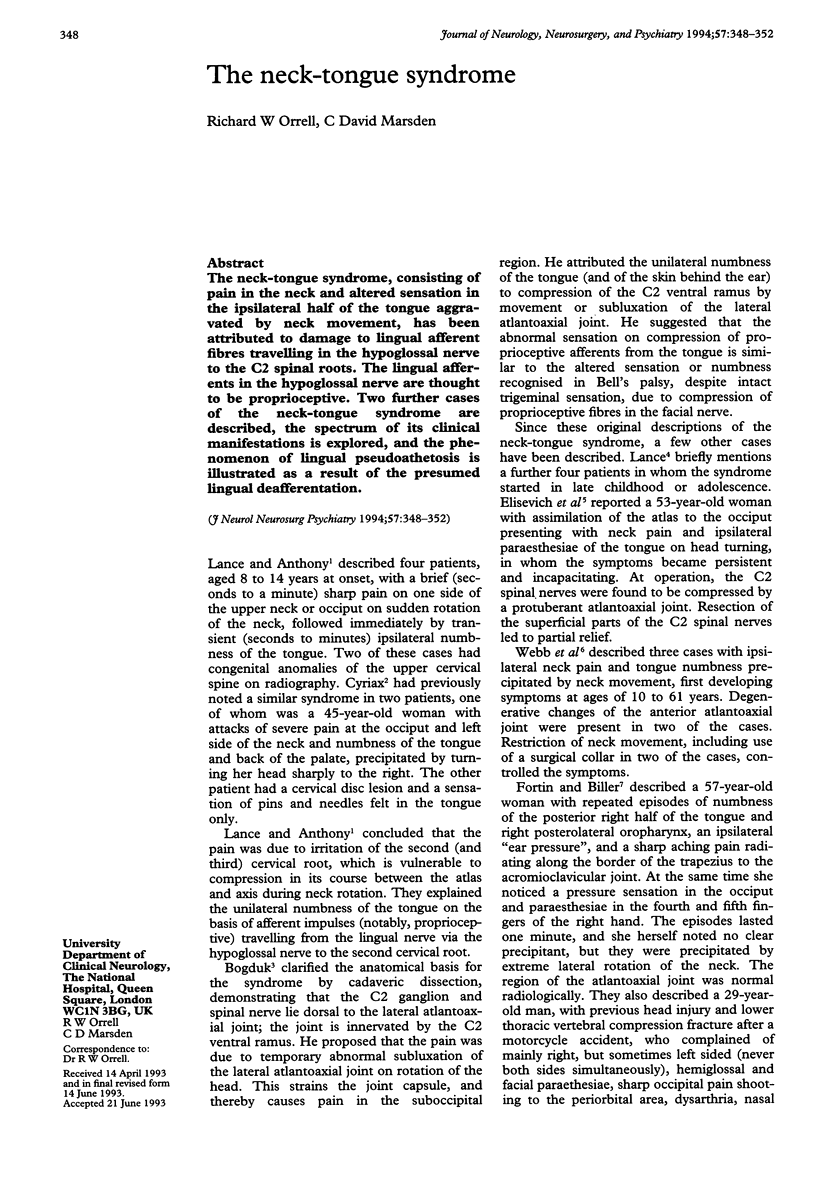
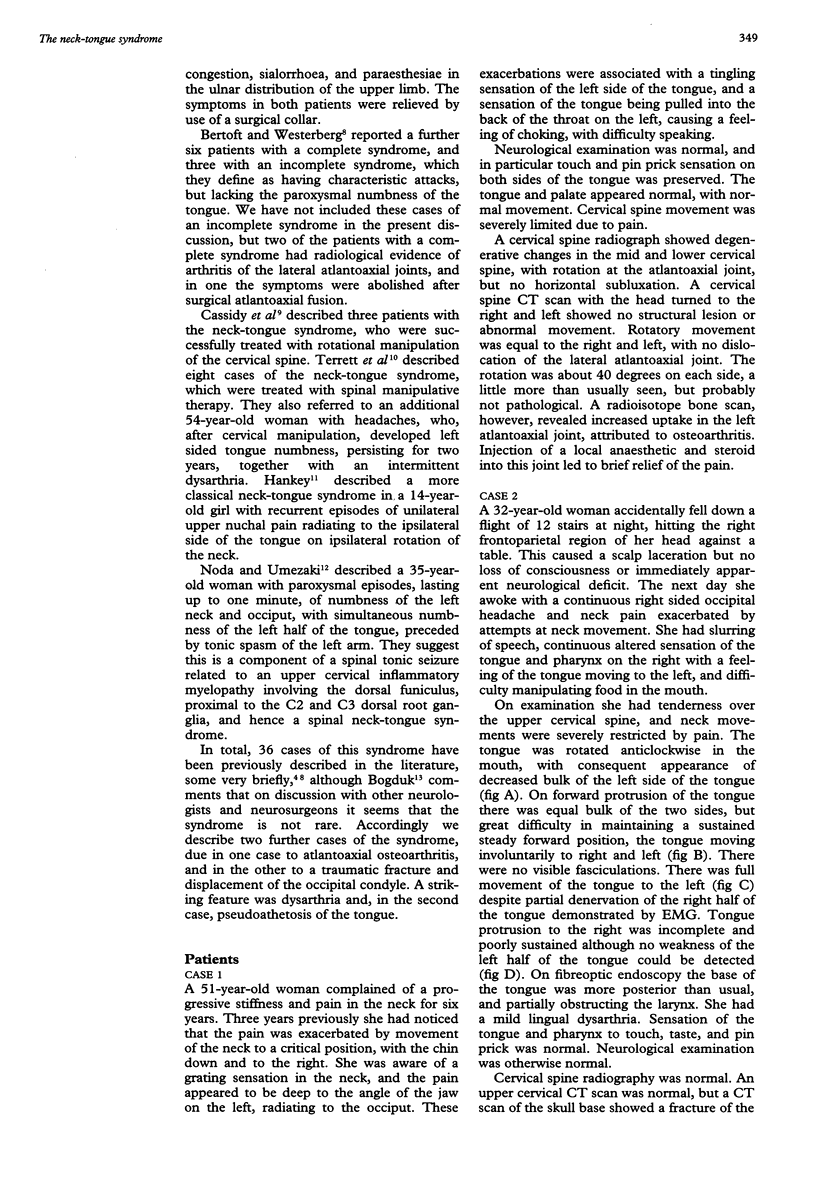
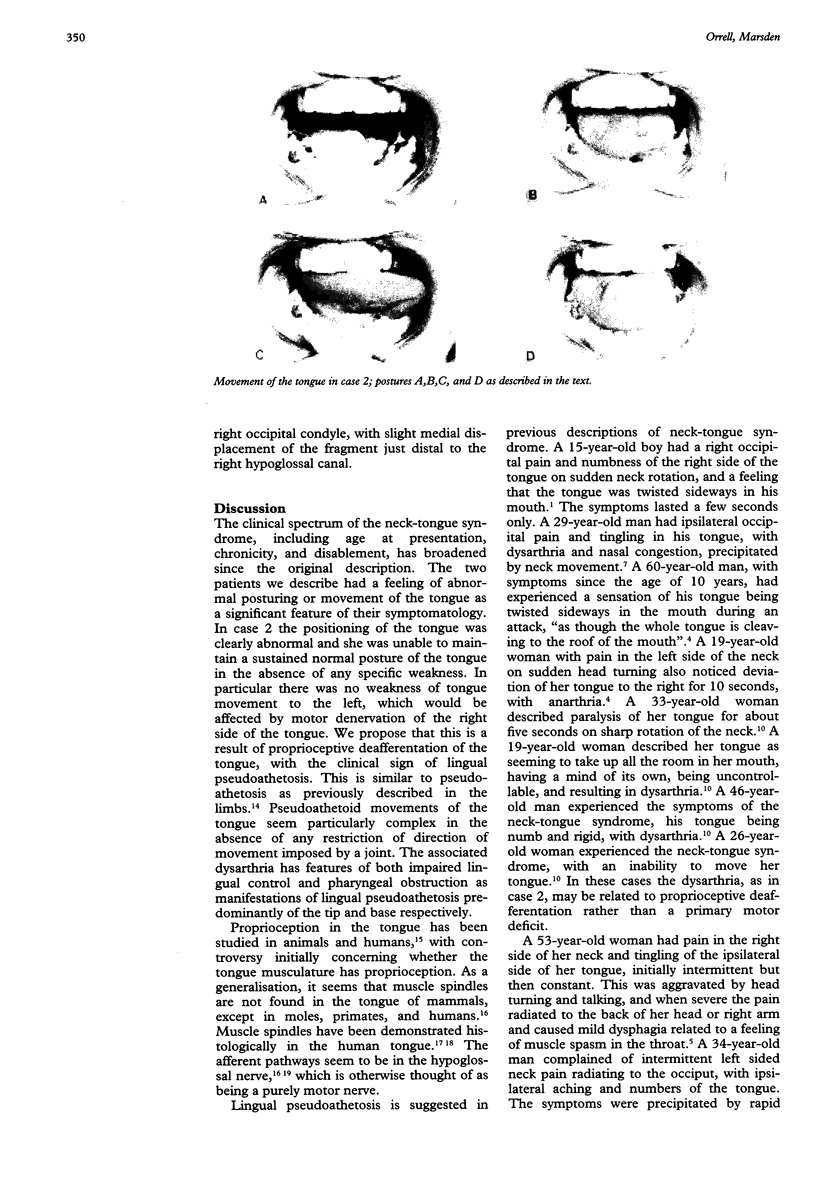
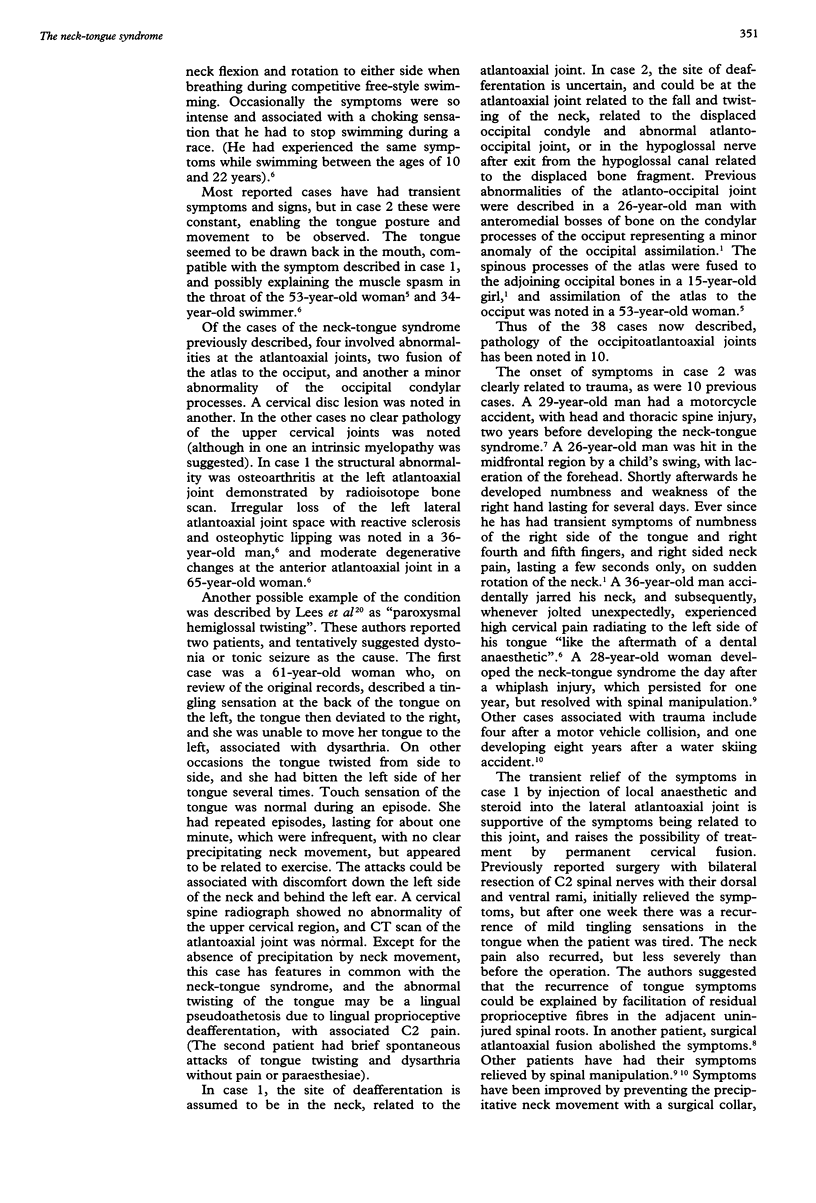
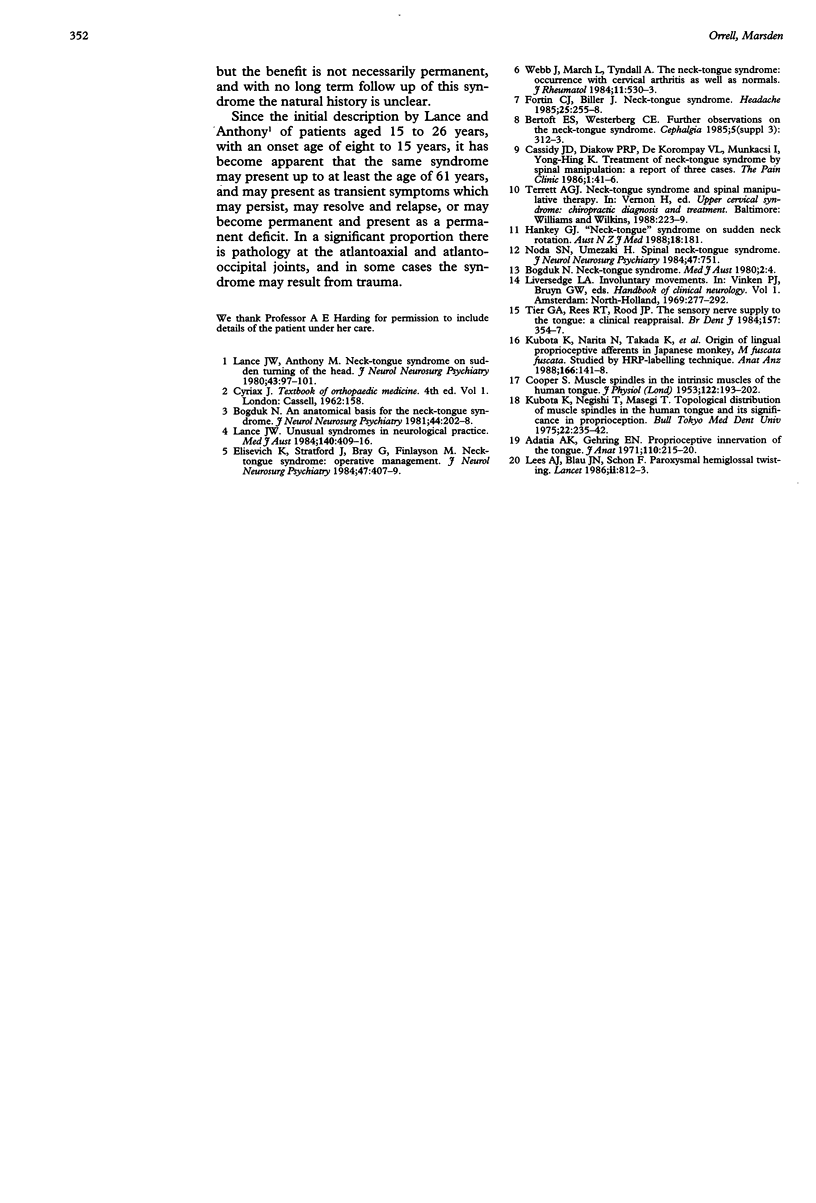
Images in this article
Selected References
These references are in PubMed. This may not be the complete list of references from this article.
- Adatia A. K., Gehring E. N. Proprioceptive innervation of the tongue. J Anat. 1971 Nov;110(Pt 2):215–220. [PMC free article] [PubMed] [Google Scholar]
- COOPER S. Muscle spindles in the intrinsic muscles of the human tongue. J Physiol. 1953 Oct;122(1):193–202. doi: 10.1113/jphysiol.1953.sp004991. [DOI] [PMC free article] [PubMed] [Google Scholar]
- Elisevich K., Stratford J., Bray G., Finlayson M. Neck tongue syndrome: operative management. J Neurol Neurosurg Psychiatry. 1984 Apr;47(4):407–409. doi: 10.1136/jnnp.47.4.407. [DOI] [PMC free article] [PubMed] [Google Scholar]
- Fortin C. J., Biller J. Neck tongue syndrome. Headache. 1985 Jul;25(5):255–258. doi: 10.1111/j.1526-4610.1985.hed2505255.x. [DOI] [PubMed] [Google Scholar]
- Kubota K., Narita N., Takada K., Lee M. S., Iseki H., Shibanai S., Nagae K. Origin of lingual proprioceptive afferents in Japanese monkey, M. fuscata fuscata. Studied by HRP-labeling technique. Anat Anz. 1988;166(1-5):141–148. [PubMed] [Google Scholar]
- Kubota K., Negishi T., Masegi T. Topological distribution of muscle spindles in the human tongue and its significance in proprioception. Bull Tokyo Med Dent Univ. 1975 Sep;22(3):235–242. [PubMed] [Google Scholar]
- Lance J. W., Anthony M. Neck-tongue syndrome on sudden turning of the head. J Neurol Neurosurg Psychiatry. 1980 Feb;43(2):97–101. doi: 10.1136/jnnp.43.2.97. [DOI] [PMC free article] [PubMed] [Google Scholar]
- Lance J. W. Unusual syndromes in neurological practice. Med J Aust. 1984 Mar 31;140(7):409–416. doi: 10.5694/j.1326-5377.1984.tb108102.x. [DOI] [PubMed] [Google Scholar]
- Lees A. J., Blau J. N., Schon F. Paroxysmal hemiglossal twisting. Lancet. 1986 Oct 4;2(8510):812–813. doi: 10.1016/s0140-6736(86)90335-1. [DOI] [PubMed] [Google Scholar]
- Tier G. A., Rees R. T., Rood J. P. The sensory nerve supply to the tongue: a clinical reappraisal. Br Dent J. 1984 Nov 24;157(10):354–357. doi: 10.1038/sj.bdj.4805493. [DOI] [PubMed] [Google Scholar]
- Webb J., March L., Tyndall A. The neck-tongue syndrome: occurrence with cervical arthritis as well as normals. J Rheumatol. 1984 Aug;11(4):530–533. [PubMed] [Google Scholar]



